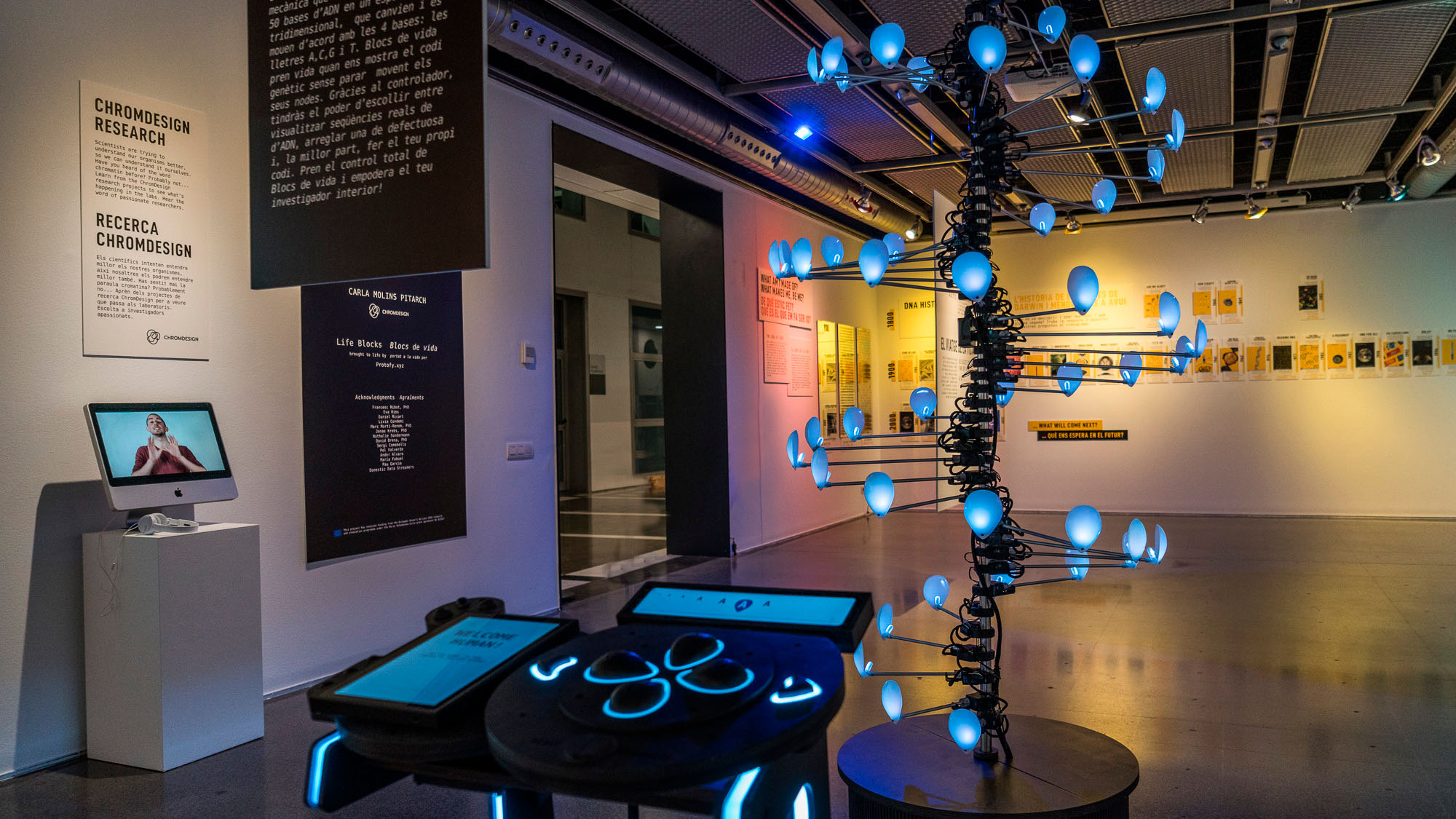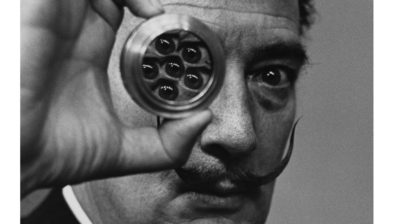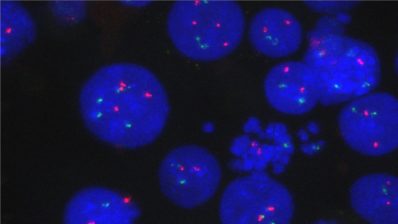DNA hides within its combination of four letters (A, C, T and G, the nitrogenous bases) the instruction book of life. And although there are mechanisms to read it, there are still many unknowns about the role that DNA folding in the form of chromatin may have in the regulation of the genome.
Shedding light on this enigma is the main objective of ChromDesign, the interdisciplinary Innovative Training Network (ITN) supported by Marie Sklodowska-Curie grants from the European Union and coordinated by the Center for Genomic Regulation (CRG). And to give voice to their research, the designer and project member Carla Molins-Pitarch, has created the exhibition ‘Life’s Journey, The Blocks That Build Us All’, which will allow visitors to take a journey through DNA, from its basic units to its 3D structure up close.
“Design can be a bridge between different disciplines such as science and technology to provide society with enriching experiences”
Carla Molins-Pitarch, ChromDesign
The exhibition was already displayed a couple of months ago at ELISAVA, where it received more than 1,500 visitors. Now it will be installed in the PRBB lobby. From Monday, January 23 until March 29, an interactive piece of the work will be on display that will allow visitors to play with DNA to discover how it is regulated and what epigenetics is (the piece will be operational between 8.00 am and 8.00 pm).
ChromDesign, training the new generation of researchers
ChromDesign involves the participation of 11 European entities and aims to understand the role of 3D chromatin organization in gene regulation during cell differentiation and in various human pathologies. That is why it brings together high-level researchers who are responsible for generating knowledge about the 3D organization of the genome over time.
“I create interactive experiences that allow us to play with technical or abstract concepts”
Carla Molins-Pitarch, ChromDesign
But the project goes further: in addition to transferring the results from academia and into clinical applications, ChromDesign highlights the importance of opening up science and bringing new knowledge to the general public. That is why they have encouraged dialogue between scientists and communicators like Carla (who is currently pursuing a PhD in science communication), who are responsible for disseminating complex and specific concepts in a pleasant and understandable way. In this way, they hope to increase knowledge about the functions of chromatin, as well as to transform scientific language into a visual and intuitive language that can reach a wider audience.
This project has received funding from the European Union’s Horizon 2022 research and innovation programme under the Mari Sklodowska-Curie grant agreement no. 813327.







